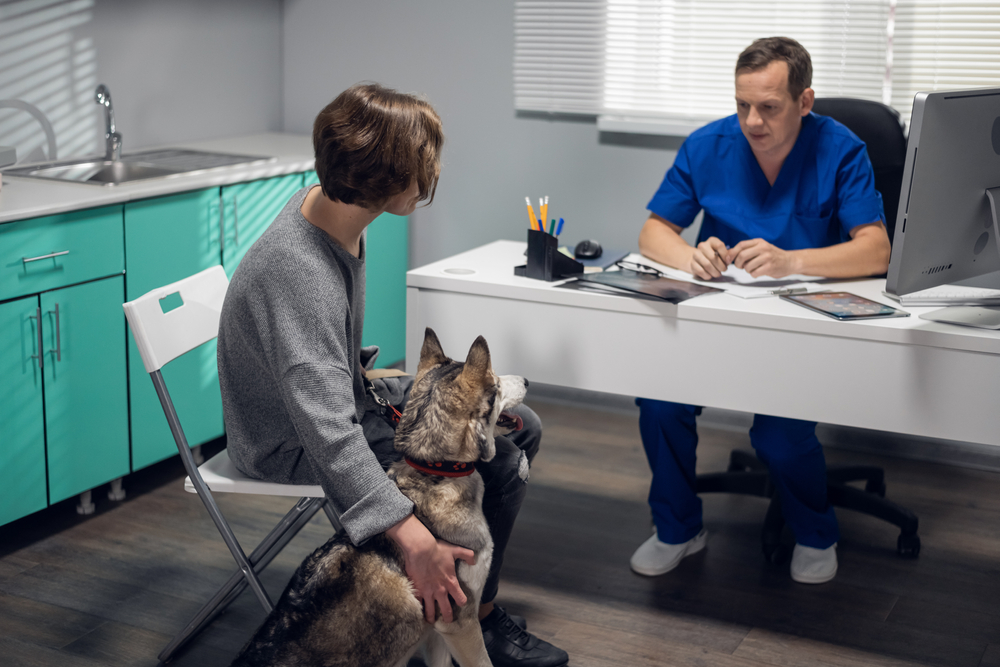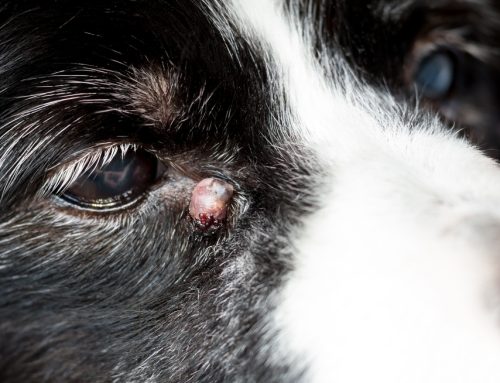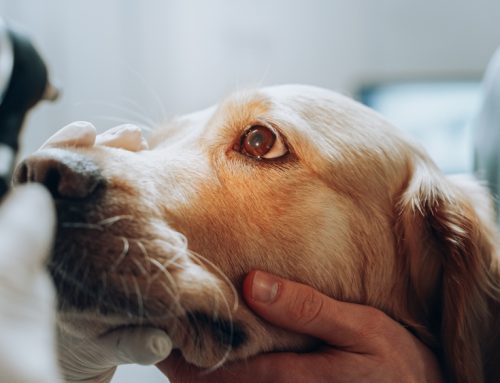When people see a blind pet, they instinctively feel sorry for the pet or the pet owner. However, blind pets can enjoy an excellent quality of life, because they do not mourn vision loss the same way as people. Pets are adaptable—they go with the flow, play the hand they are dealt, and can cope well despite their vision loss—but our Veterinary Vision Center team still should evaluate any pet with a suspected eye disease to obtain a diagnosis and formulate a treatment plan.
Blinding eye disease signs vary, with each requiring special treatment. Our goal is to prevent or slow vision loss whenever possible or to ensure eye comfort and pain control when vision loss is imminent, so we are providing this overview of the most common conditions that cause blindness in pets and each problem’s long-term outlook.
#1: Glaucoma in pets
Glaucoma is a leading cause of blindness in dogs and occasionally affects cats. Glaucoma can be classified as primary (i.e., inherited) or secondary (i.e., acquired), with each leading to increased inside eye pressure (i.e., intraocular pressure [IOP]) because of an abnormal fluid drainage system. Dogs predisposed to primary glaucoma are born with a defect and develop glaucoma later in life, first in one eye, and then the other. Secondary glaucoma occurs when the drainage angle becomes clogged or blocked secondary to another condition and typically affects only one eye. Glaucoma signs include eye redness, eye bulging, and a blue, gray, or cloudy color change.
Glaucoma is aggressive and leads to eye pressures that progressively increase and ultimately damage the optic nerve and cause blindness. Medical or surgical treatments can delay glaucoma or vision loss onset in the second eye after diagnosis in the first eye, which is often already blind by the time signs appear. Treatments typically lose their effectiveness after a few months or years, and most pets diagnosed in younger or middle age will eventually go blind. Because glaucoma is painful, our team may recommend eye removal or other pain-relieving procedures for permanently blind eyes.
#2: Cataracts in pets
Cataracts may form in pets because of age, genetic predisposition, trauma, or nutritional factors, including hyperglycemia from diabetes. The eye lens becomes cloudy and opaque, obscuring vision and causing vision loss that can range from minor to total, depending on how quickly the cataract forms and progresses, if at all. The only proven cataract treatment is surgical removal, which may result in complications and can be expensive. Diligent follow-up care and lifelong eyedrops are required after cataract surgery.
Cataracts are painless, but their presence can lead to secondary, painful conditions. Eye inflammation is common and can lead to glaucoma in pets who do not undergo surgery, but may be controlled with daily anti-inflammatory drops. A cataractous lens is also more likely to detach and fall forward into the front eye chamber, which can also lead to glaucoma.
#3: Progressive retinal atrophy in pets
Progressive retinal atrophy (PRA) is a group of genetic and inherited disorders most commonly found in purebred dogs. Many breeds can carry the genes associated with PRA but, thankfully, genetic tests are now available and breeders can reduce the incidence of this disease in their lines. PRA causes slowly progressive retinal thinning and retinal cell (i.e., rods and cones) damage, and most PRA types initially cause night blindness that eventually progresses to day blindness. Pet owners may first notice their pet is hesitant to navigate at night, or they struggle with fetching or bump into objects in low light. PRA is not painful, and most dogs adapt well, because their vision loss occurs over months to years. PRA has no cure or effective treatment, although some studies suggest that antioxidant supplements may slightly slow progression.
#4: Sudden acquired retinal degeneration syndrome (SARDS) in pets

SARDS is a condition that primarily affects middle-aged to older dogs and has stumped the veterinary community for many years. Research is ongoing to determine SARDS’ causes, with some thought that the immune system or hormonal systems may play roles. SARDS results in sudden blindness without any other obvious cause—the eyes typically appear healthy and normal, but retinal thinning becomes apparent on examination months or years later. No treatments have been proven to reverse SARDS vision loss.
SARDS can be devastating initially, but the disease has not been linked to eye pain or systemic health issues, and pets will slowly adapt to their blindness. Obtaining an accurate SARDS diagnosis from a veterinary ophthalmologist is crucial, because other, far more serious, brain or nerve problems can mimic this condition. The electroretinogram (ERG) test can measure retinal function and confirm the diagnosis, but should the test show normal retinal function, we may recommend referral to a veterinary neurologist for further evaluation.
Our Veterinary Vision Center team is uniquely qualified to diagnose and treat a wide spectrum of eye diseases and conditions that can lead to blindness in pets. Contact us to schedule a consultation or an urgent visit if you notice changes in your pet’s eye appearance, eye comfort, or vision. Seek veterinary care through our office, your primary veterinarian, or a local emergency veterinary clinic if your pet loses vision suddenly.







Leave A Comment